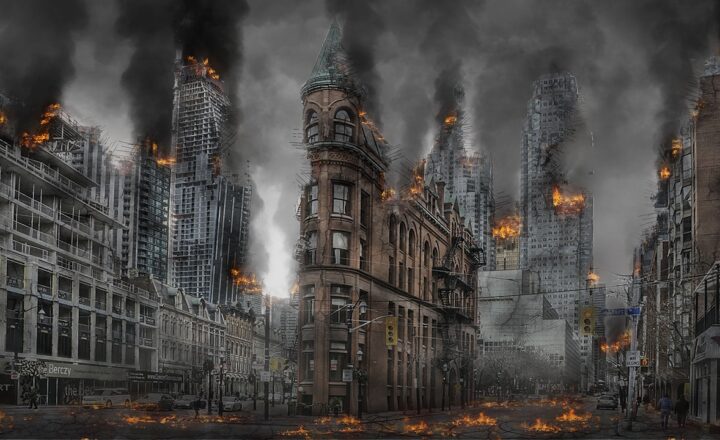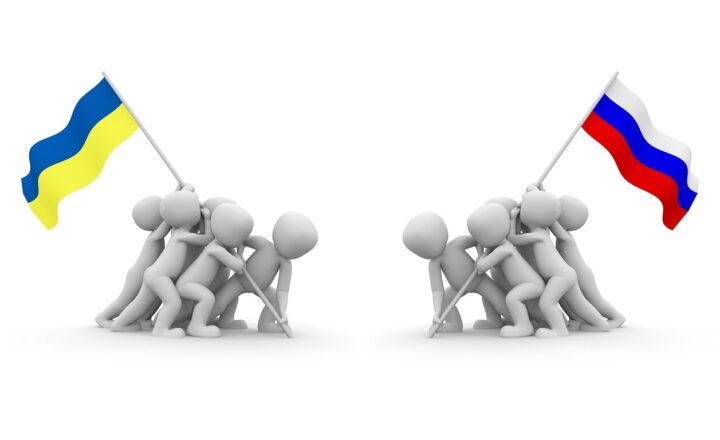The Role of Propaganda in Shaping History’s Most Significant Events
November 16, 2024

Throughout history, propaganda has been a crucial tool used by leaders, governments, and various organizations to influence public opinion and behavior. From the ancient empires to the modern digital age, propaganda has played a significant role in shaping events that have changed the course of nations and societies. This article delves into the various ways propaganda has been employed throughout history, explores its various forms and techniques, and examines its impact on pivotal moments in time.
1. Defining Propaganda
Before dissecting its impact, it’s essential to understand what propaganda is. Propaganda refers to information, especially of a biased or misleading nature, used to promote a particular political cause or point of view. While often considered negative, as it’s frequently associated with deceit and manipulation, propaganda can also encompass any communication aimed at influencing an audience’s beliefs and actions.
Traditional forms of propaganda have included posters, speeches, literature, and film. In the digital age, social media and online platforms have expanded the scope and reach of propaganda, making it even more pervasive.
2. Historical Examples of Propaganda
Throughout history, propaganda has been used in various instances to garner support, justify actions, or demonize enemies. Here are some critical examples:
2.1. The Birth of Modern Propaganda During World War I
World War I was a turning point in the evolution of propaganda. Governments realized the importance of morale and public support in the war effort. The Committee on Public Information (CPI) in the United States was one such initiative that employed a sophisticated approach to propaganda. Under the leadership of George Creel, the CPI used posters, pamphlets, films, and public speeches to encourage enlistment and promote bond purchases. One of the most notable campaigns featured the famous “I Want You” poster with Uncle Sam, which became an iconic symbol of American patriotism.
Such efforts not only aimed to recruit soldiers but also sought to foster a sense of unity and suppress dissenting views that could undermine the war effort.
2.2. Nazi Germany and the Mastery of Propaganda
One of the most infamous uses of propaganda occurred during Adolf Hitler’s regime in Nazi Germany. Joseph Goebbels, the Minister of Propaganda, masterfully utilized media to propagate the ideals of the Nazi party and promote anti-Semitic ideologies. Goebbels’ regime produced films, posters, and rallies that glorified the state while vilifying Jews and other perceived enemies.
The “big lie” technique, where false statements are repeated so often they are accepted as truth, played a fundamental role. This manipulation of perception was pivotal in securing widespread support for Hitler’s policies, leading to devastating consequences during World War II.
2.3. The Cold War and Propaganda as a Tool for Ideological Battle
During the Cold War, propaganda became a critical element in the struggle between the United States and the Soviet Union. Each side aimed to promote its own ideology—capitalism versus communism—while casting the other as an existential threat. The U.S. utilized films, literature, and radio broadcasts like Radio Free Europe to showcase the supposed freedoms of the West. In contrast, the USSR produced its own films and media that portrayed the U.S. as morally and socially bankrupt.
This ideological battle influenced global perceptions and policies, ultimately shaping geopolitics and leading to proxy wars across the globe.
3. Mechanisms of Propaganda
The effectiveness of propaganda stems from several psychological mechanisms and techniques used to engage and persuade the audience:
3.1. Emotional Appeal
Emotional appeals are one of the most potent propaganda techniques. By invoking feelings of fear, pride, or anger, propagandists can motivate individuals to support causes or ideas instinctively.
For example, wartime advertisements often depicted graphic images to instill fear about enemies while instigating pride in one’s country.
3.2. Scapegoating
Scapegoating involves blaming a particular group for broader societal issues. This strategy has been used throughout history to dehumanize enemies and unify a population against a common foe.
Nazi propaganda depicted Jews as responsible for Germany’s economic troubles, reinforcing harmful stereotypes and justifying inhumane treatment.
3.3. Repetition and Familiarity
Repetition is key in propaganda; the more often a message is heard, the more likely people are to internalize it. Campaign slogans, jingles, and iconic imagery all serve to embed these ideas in public consciousness. Take the phrase “Make America Great Again,” which gained traction through consistent repetition and became a rallying cry during a political campaign.
4. The Modern Era of Propaganda
In today’s information age, the landscape of propaganda has evolved with the rise of the internet and social media. Misinformation can spread rapidly, influencing public opinion on a global scale. Social media platforms have become battlegrounds for ideological conflicts, where users are exposed to targeted content that reinforces their beliefs.
4.1. The Role of Social Media
Platforms like Facebook, Twitter, and Instagram provide fertile ground for propaganda because they enable rapid dissemination of information. The use of bots and algorithms to amplify certain messages allows coordinated campaigns to reach millions in mere moments.
Recent events like the 2016 U.S. presidential election and various political movements around the world have highlighted the dangers of social media propaganda, where misinformation has swayed public perception and action.
5. The Ethical Considerations of Propaganda
As propaganda continues to shape public sentiment and events, ethical considerations arise regarding its use. While it can mobilize positive action for social change, it can also lead to manipulation, fear-mongering, and societal division. The challenge lies in discerning fact from fiction and recognizing the motives behind the messages we consume and propagate.
5.1. The Role of Critical Thinking
In an age inundated with information, fostering critical thinking skills is crucial. Educators, parents, and individuals must promote media literacy to ensure that people can distinguish between genuine information and propaganda. Understanding the techniques used in propaganda allows for a more informed populace that can resist manipulation and defend democratic principles.
Conclusion
The role of propaganda in shaping history’s most significant events cannot be understated. From war efforts to ideological battles, propaganda has served as both a weapon and a tool for gaining support, fueling movements, and instigating change. As we navigate the complexities of the information age, understanding the mechanics of propaganda—and developing the critical thinking skills necessary to challenge it—is vital for a healthy, informed society.
In summary, while propaganda can be wielded for both good and ill, the onus is on individuals and society to discern truth from manipulation and use these lessons to foster a more democratic and informed world.








